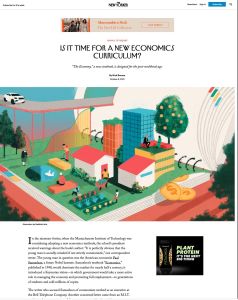Join getAbstract to access the summary!

Join getAbstract to access the summary!
Nick Romeo
Is It Time for a New Economics Curriculum?
“The Economy,” a new textbook, is designed for the post-neoliberal age.
The New Yorker, 2021
What's inside?
Current economics courses rest too heavily on received orthodoxies.
Recommendation
The standard economics curriculum has long been static, but a small group of academics is reimagining how to present the field to younger generations. Journalist Nick Romeo highlights a dynamic new text whose authors’ ambitions are to broaden the perspective on economics by examining the geopolitical and sociological angles that underpin national economies. The new approach would embrace not just data and theories but also social phenomena in a wide-ranging attempt to take on the messy complexity of the dismal science.
Summary
About the Author
Nick Romeo is a journalist and author whose work has appeared in The New Yorker and the Washington Post.


















Comment on this summary